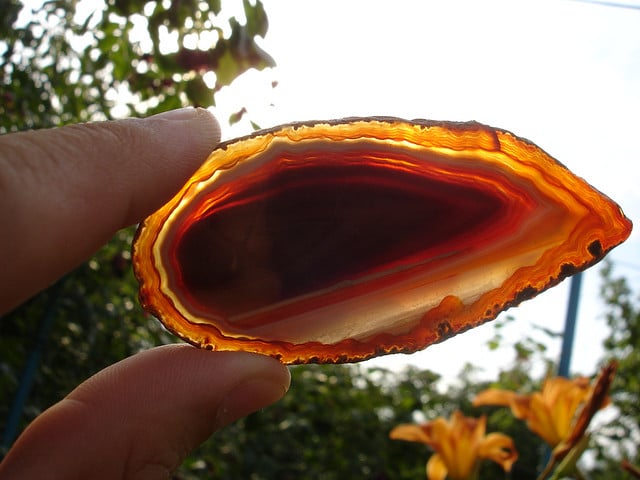What is Gemstone Transparency?
Gemstone transparency describes how much light passes through a gem and how it scatters. Learn what causes a gem to be opaque, translucent, or transparent.
2 Minute Read
At the atomic level, gemstones absorb, transmit, and reflect different wavelengths of light. The wavelengths of visible light that a particular gemstone transmits are what we see with the naked eye as the gem's color.
Gemstone transparency is a way of describing how much light, if any, a gem can transmit and how scattered that light is when it exits the gem.
Opacity, Translucence, and Transparency
The more wavelengths of light a gemstone absorbs or reflects, the more opaque it is. (Both a solid black object and a mirror, for example, are considered to be opaque). The more light a gem absorbs or reflects means it transmits less light through it.
A translucent gem can transmit enough wavelengths of light that we can see light shining through it. However, if the wavelengths of light that escape the gem are highly scattered, due to the gem's refractive index (RI) or other properties, light is all we can see through the gem. We can't see images beyond it.
A transparent gem is translucent and transmits light with little scattering. This allows us to see images as well as light through a transparent gem.
Can You Measure Gemstone Transparency?
We can measure scientifically the opacity of a material, from perfect transparency to perfect opacity (in units of "opacity," no less). However, gemologists normally use the commonplace meanings of opacity, translucence, and transparency in gemstone descriptions. A wide range of transparency can exist even within a single gem species. Therefore, determining a gemstone's transparency doesn't necessarily help with identification. Precise measurements, in most cases, aren't necessary. Descriptions such as "near opaque," "semi-translucent," and "almost transparent" can convey well enough the optical effects of interest to most people.
Gemstone Transparency in Ultraviolet Light
Nevertheless, we should make an important scientific distinction when discussing gemstone transparency. Since we can only see white light wavelengths with the naked eye, our observations of transparency can take for granted that we're referring to conditions in the visible spectrum of light. However, there are wavelengths of light beyond visible light, such as ultraviolet (UV) light. Some gemstones, such as diamonds, are transparent into the UV spectrum. Type I diamonds, the most common type of diamonds, contain nitrogen and are transparent down to UV wavelengths of 300 nm (the longwave UV range). Type II diamonds contain no nitrogen and are transparent even further down, to UV wavelengths of 250 nm (the shortwave UV range). In white light, these types of diamonds would have no noticeable difference in transparency. You would need a spectrometer to make this distinction.
International Gem Society
Related Articles
What are Crystal Systems and Mineral Habits?
How Do Emeralds Form?
A History of Silver Mining in the United States
What are Allochromatic and Idiochromatic Gems?
Latest Articles
Cutting a 294-ct Trilliant Morganite: An Interview with Steve Moriarty
Tourmaline Engagement Ring Stones: the Ultimate Guide
Chabazite Value, Price, and Jewelry Information
Recutting Diamonds and Colored Gemstones
Never Stop Learning
When you join the IGS community, you get trusted diamond & gemstone information when you need it.
Get Gemology Insights
Get started with the International Gem Society’s free guide to gemstone identification. Join our weekly newsletter & get a free copy of the Gem ID Checklist!
